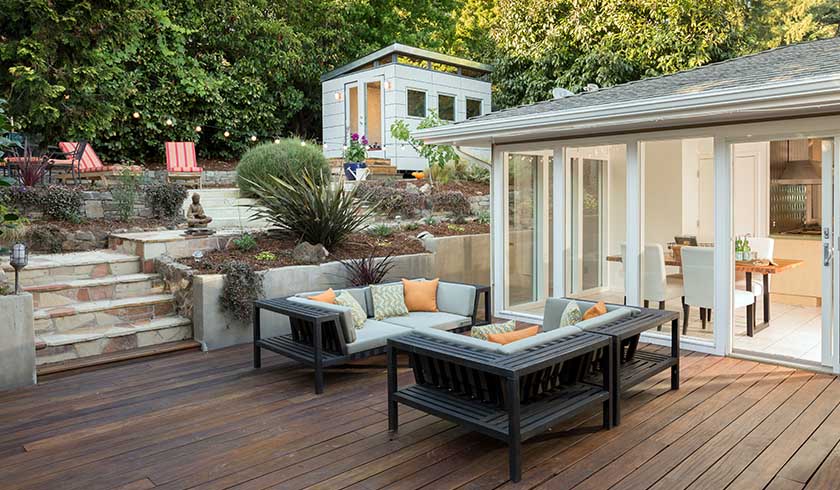4 ways to build sustainably that don’t cost the earth
Building a sustainable property doesn’t have to be an expensive investment for it to cost less in the long run, according to a builder.

AJP Constructions’ owner Andrew Payton has considered the notion that there’s a “sustainability premium” associated with going green as “ludicrous”.
He said it’s “ridiculous that some builders attach a premium to making homes more sustainable”.
Instead, he said “by applying clever planning early, you can construct a high-end property that’s faster to build and costs less to operate”.
And with sustainability coming into sharper focus during recent months, Mr Payton said “everyone – from builders to owners and tenants – seem[s] keen on creating the type of structures that are not only beautiful and functional, but also kind to the planet while creating operating cost savings”.
It’s a boon for both home owners and investors, according to the builder.
“Home owners are keen to reduce their running expenses in times of high costs of living,” he said.
For investors, he added that money savings allow for a far better yield on investment properties.
Here are his top tips for saving money and the environment with a new build:
1. Design matters
“The design stage is when you start incorporating your features for a home that both achieves your goals and reduces consumption,” Mr Payton said.
By simply understanding orientation, exposure, and a home’s layout, many owners can reduce heating and cooling costs.
While open plan is great, the builder said “if the orientation and exposure to sunlight [are] wrong, then you can end up paying a lot extra in running costs”.
Micro design elements can also contribute to smart design, with Mr Payton highlighting eave overhangs and patio roof lengths as important.
“Many small changes can have a big impact on costs – from window placement to avoiding ‘dead space’ in under-utilised rooms,” he said.
2. Modern materials
One of the top building strategies to achieve a green dream home is using the right materials, Mr Payton flagged.
From his perspective, “one of the most promising right now is cross-Laminated timber, or CLT, for framing”.
CLT is stronger than conventional framing, he said, as well as being a greener alternative than traditional timber.
“On a previous large-scale project our client saved over $20,000 on the contract sum by using CLT. Also, its base material is timber, and the wood crop source is a carbon sink,” he noted.
Use of such a material can cut both costs, and time – Mr Payton said some recent jobs have seen three months shaved off their build time.
“It’s cheaper to produce and easier to work with than steel or concrete,” he said.
“We’ve also found CLT frames are faster to erect than traditional frames, because it comes in panels.”
3. Blurring the in and outside
Mr Payton said Australians shouldn’t ignore the “wide-ranging benefits of blurring the line between the indoors and the outdoors”.
Opening up to a patio or deck adds square metres to your home and is a flexible way to create extra space, according to the builder.
That flexibility extends to house running costs too, he added.
“By using the right materials for your openings – solar tinted glass stacker doors or more solid bi-folds – you can simply reduce the space when it’s not needed and insulate the area you’re either heating and cooling,” he said.
And when things do get warmer, he touted the benefits of outdoor area openings that allow breezes to come through.
4. Don’t skimp on finishes
Paying a little bit more for quality fittings and fixtures will also be a better long-term investment.
“This may sound counter-intuitive to the idea of reducing costs, but it’s often worth the extra money to choose recognised brand name appliances with excellent durability,” Mr Payton offered.
“While the low-price sticker on a cheap, knock-off import may look enticing, if it needs constant repair or replacement, that’s money down the drain and wasted resources used.”
The same goes for finishes, with Mr Payton lauding the benefits of “good quality, durable carpet, tile, timber and paint” as all paying for themselves pretty quickly.

